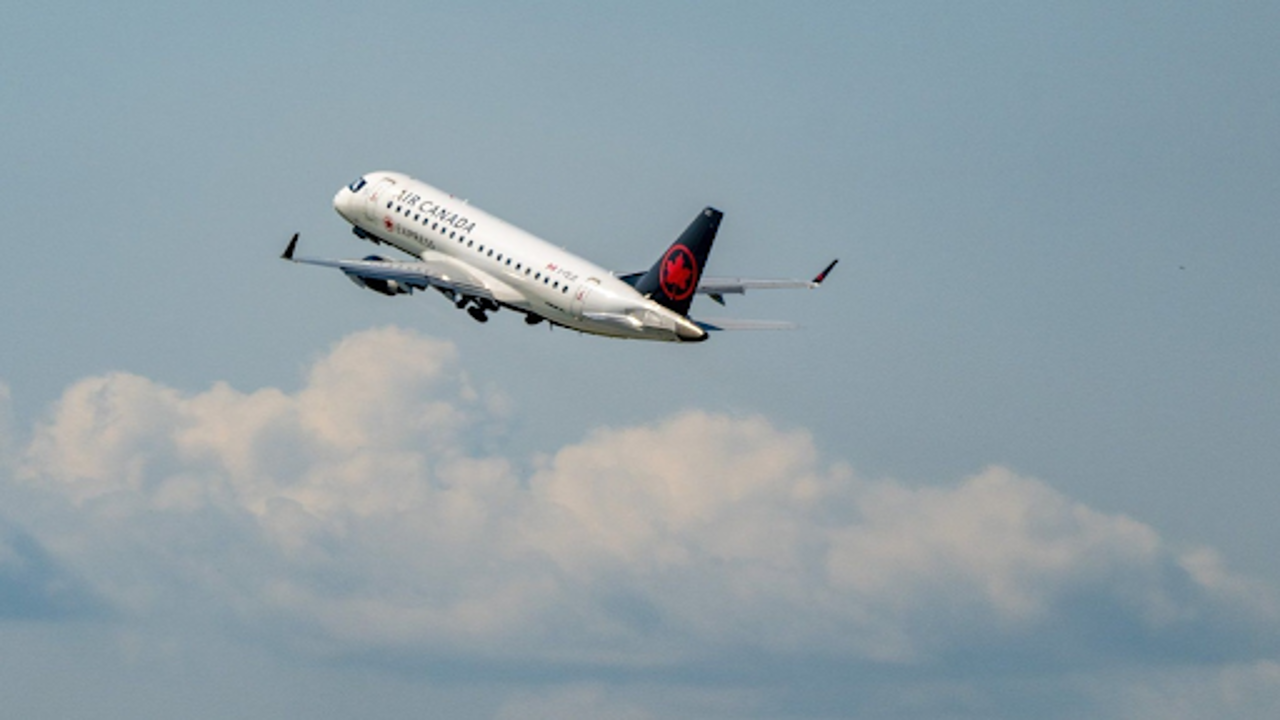
An Air Canada aircraft is seen departing from Montreal-Pierre Elliott Trudeau International Airport in Montreal on Friday, September 13, 2024. The Canadian Press
Travel habits in Canada are shifting as the holiday season approaches, with many Canadians opting for domestic destinations over international ones, particularly trips to the United States. This trend reflects tightening budgets, affordable domestic fares, and the influence of a weakened Canadian dollar.
Barry Choi, a personal finance and travel expert, noted a decline in the number of filled seats on flights he’s taken recently. “People are traveling less,” Choi observed, adding that the rush to travel post-COVID has largely subsided. The initial surge in travel in 2022 and early 2023 has now calmed, with many people having satisfied their pent-up wanderlust.
This December, domestic flight capacity in Canada is expected to increase by nearly 10% compared to last year. With this growth in supply, airfare for flights within Canada has dropped about 20% from September 2022. By contrast, flights to the U.S. are seeing a 2.5% decline in capacity, resulting in higher ticket prices. “Fewer flights mean higher airfare generally,” said aviation industry expert Mike Arnot.
The weak Canadian dollar, which recently hit its lowest exchange rate in years, is further discouraging Canadians from traveling to the U.S. Popular winter destinations like Florida, Arizona, and California are becoming costlier for Canadian travelers, particularly retirees and snowbirds. Travel credits and vouchers from canceled trips in 2020 and 2021 have also largely been used up, contributing to the slowdown in international travel.
A survey by a travel platform revealed that more than half of Canadians plan to skip trips this holiday season. Economic concerns like the high cost of living, rising housing expenses, and lingering inflation are making many, especially millennials and Gen Z, think twice about splurging on travel. “People are feeling pinched despite some economic improvements,” said FlightHub Vice President Ramzi Rahbani.
Family visits are emerging as the primary reason for air travel during the holidays. Millennials and Gen Z, who make up more than half of all passengers, are largely opting for domestic trips. Major Canadian cities like Toronto and Vancouver remain popular hubs for family reunions. Internationally, destinations like Manila and New Delhi are seeing high booking volumes as Canadians return to visit relatives. However, leisure trips to sunny destinations appear to have plateaued.
While some holiday travelers still venture to classic U.S. destinations like New York City, the overall trend leans toward stability. “Travel habits have stabilized compared to the wild fluctuations during the pandemic years,” noted Richard Vanderlubbe, a travel agency founder. Statistics Canada reports that while passenger numbers at Canada’s major airports rose 4% year-over-year in October, this growth only slightly outpaced population increases.
Holiday travel budgets also reflect the cautious approach many Canadians are taking. Nearly a quarter of travelers have set aside between $1,000 and $2,000, while 22% plan to spend between $500 and $1,000. A significant portion of people intends to keep their holiday travel spending under $500.















